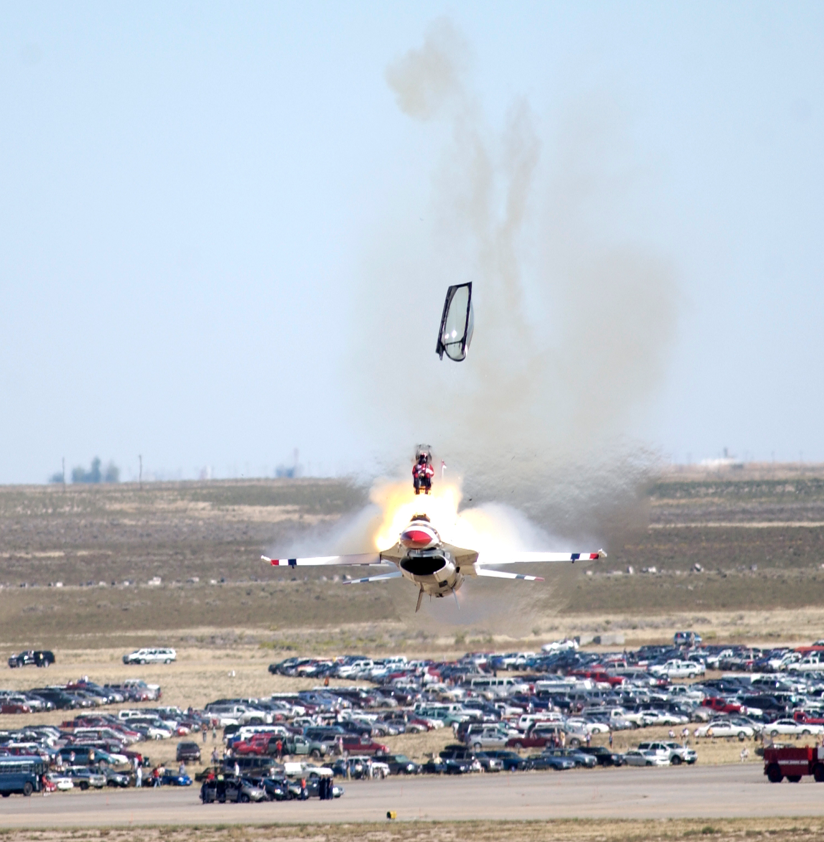

14 September 2003: During an air show at Mountain Home Air Force Base, Idaho, Captain Chris R. Stricklin, a member of the U.S. Air Force Air Demonstration Squadron, the Thunderbirds, was flying Thunderbird Six, a solo demonstration aircraft. Thunderbird Six was a General Dynamics F-16C Block 32J Fighting Falcon, serial number 87-0327, a single-seat, single-engine fighter.
Captain Stricklin was performing a “Maximum Climb and Split-S on Takeoff” maneuver, in which the pilot takes off in a maximum climb at 55° nose up to a height of 3,500 feet above the ground, rolls to an inverted position and performs a descending inside half loop. This results in the aircraft returning to level flight in the opposite direction, upright, and at a considerably lower altitude.
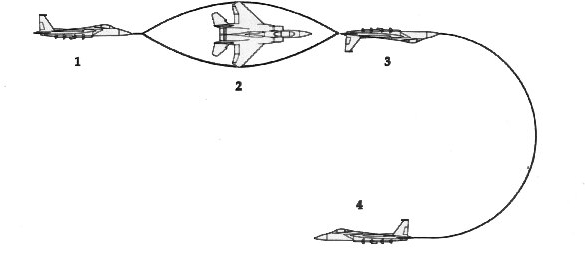
During his time with the Thunderbirds, Stricklin had performed this maneuver more than 200 times. This time, though, he mistakenly entered the Split-S at 2,670 feet (814 meters) above the ground—when he should have been at 3,500 feet (1,067 meters) AGL. As he came approached the vertical point in his dive, he realized that he did not have enough altitude to pull out.
Captain Stricklin banked the F-16 so that it was heading away from the crowd of spectators, and when he was just 140 feet (43 meters) above the surface, he ejected from the fighter. 87-0327 impacted the ground 0.8 seconds later and was completely destroyed. The F-16 was valued at $20.4 million.
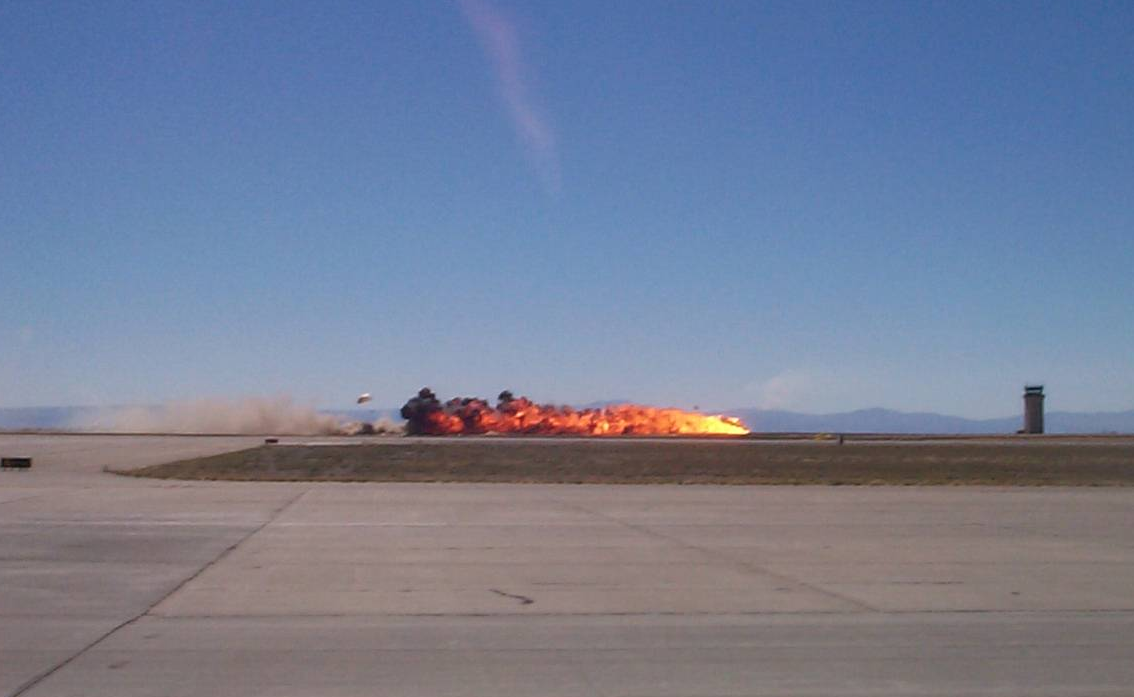
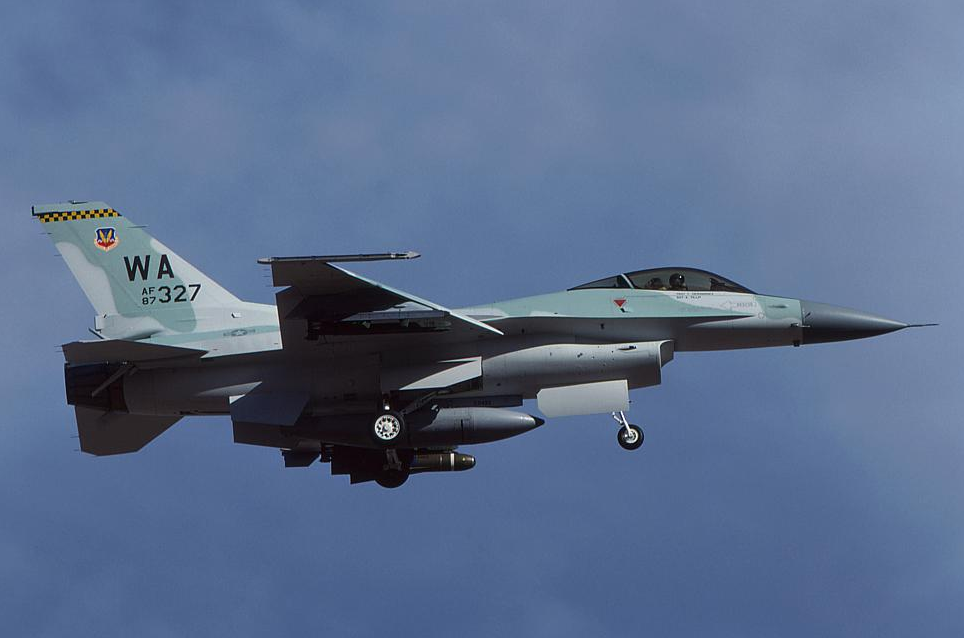

The F-16C Block 32J is powered by one Pratt & Whitney F100-PW-220 afterburning turbofan engine which produces a maximum of 23,770 pounds of thrust (105.34 kilonewtons).
The Fighting Falcon has a maximum speed of Mach 1.2 at Sea Level, and Mach 2.02 at 40,000 feet (12,192 meters). The service ceiling is higher than 50,000 feet (15,240 meters).
The F-16C is armed with one General Electric M61A1 Vulcan 20 mm 6-barreled Gatling gun with 515 rounds of ammunition, and can carry a wide range of missiles and bombs, including the AIM-9 Sidewinder and AIM-120 AMRAAM air-to-air missiles, and AGM-45 Shrike and AGM-65 Maverick air-to-ground missiles..
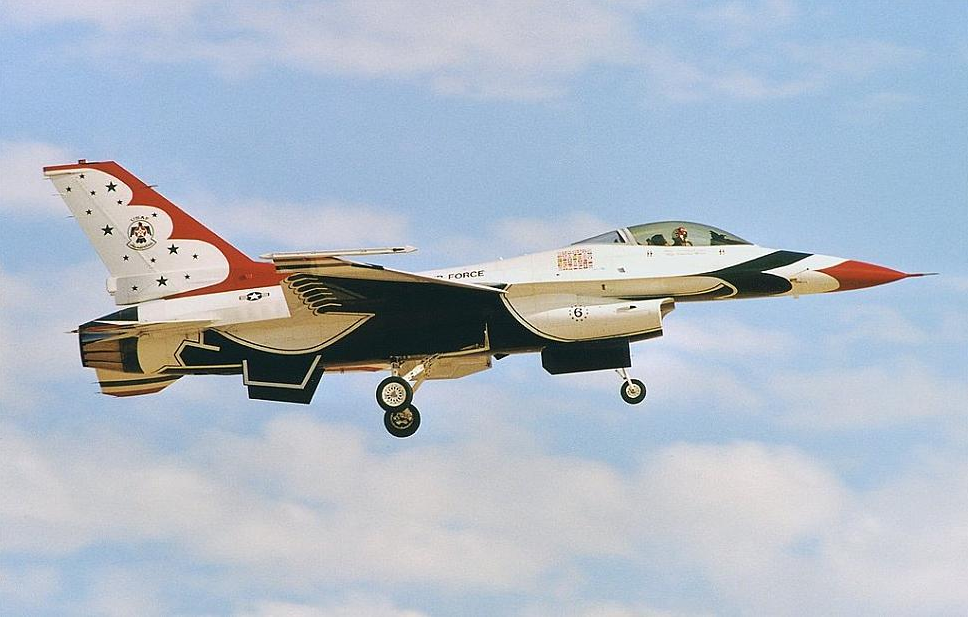
This accident ended Striklin’s assignment with the Thunderbirds. He was reassigned as Pilot Career Field Manager, Headquarters, U.S. Air Force.
A 1994 graduate of the United States Air Force Academy, Stricklin went on to earn a Master of Aeronautical Science degree, and later a Master of Military Operational Art and Science degree from the Air Command and Staff College.
Captain Stricklin was promoted to the rank of major, 1 September 2004. From 2006 to 2007, Major Stricklin was Chief of Fighter Operations, NATO, at Eskisehir Air Base, Turkey. He was promoted to Lieutenant Colonel 1 June 2008. From February 2009 to June 2010, Lieutenant Colonel Stricklin was assigned as Chief of Safety, 14th Flying Training Wing, at Columbus Air Force Base, Mississippi. On 18 June 2010, Lieutenant Colonel Stricklin was assigned to command the 49th Fighter Training Squadron, also at Columbus. After assignments to the White House and the Army War College, Stricklin was assigned to NATO as Chief of Staff, Air Training Command, Kabul, Afghanistan. In June 2014, Lieutenant Colonel Stricklin was assigned as Vice Commander, 9th Reconnaissance Wing, Beale Air Force Base, California. He was promoted to the rank of Colonel, 1 September 2014. He retired from the U.S. Air Force in 2017.
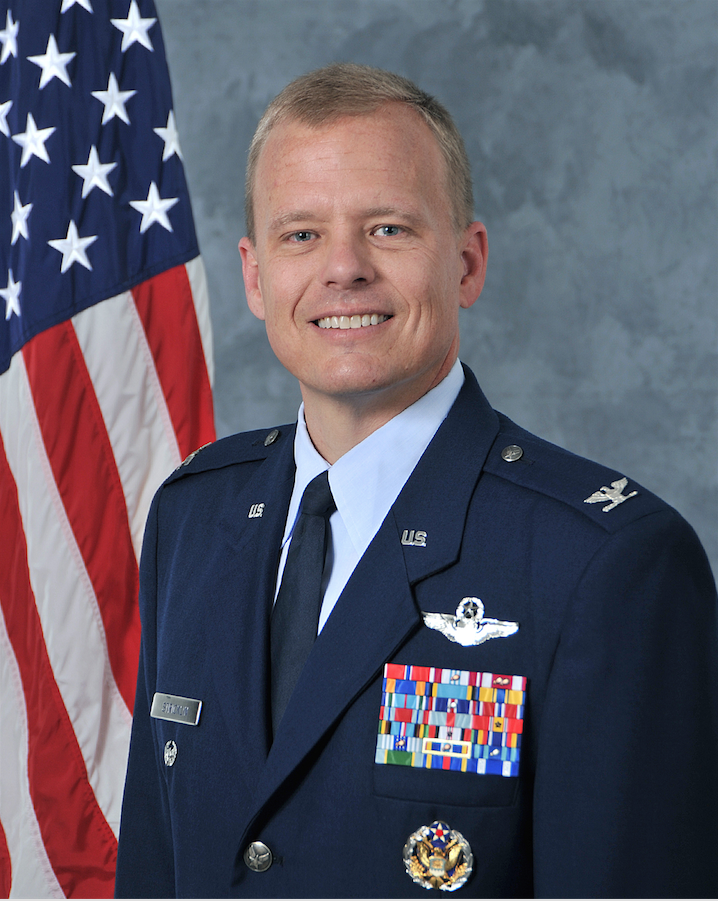
© 2018, Bryan R. Swopes
I love your site…This day in Aviation. I have subscribed and receive your post on my personal Facebook pages……..and I would really like to receive this at our RC clubs Facebook page….How do I accomplish this task?
The club facebook address is……
https://www.facebook.com/Port-City-Radio-Control-174890875897779/timeline/
Thank-you
Lyle Williams – President, Port City RC
Thanks, Mr. Williams. This is above my pay grade, but I think that the club’s facebook page “likes” TDIA’s facebook page. –Bryan
Dear Sir,
I don’t. Know if it was true Split “S” manunuver that he was doing as he had just taken off. It was an amazing event to watch. The most interesting thing that I saw that day was the change of the staff, crews and leadership ath MtHAFB, they went from having an open house to sitting the base down in a matter of hours, or less. The public was asked to leave and with the help of LEO’s everyone was escorted off the base.
HJaving watched the Thunderbirds and Angles fly as a kid, if had been told that I would see one of them crash in my lifetime I would have be the house that I would not have seen what I saw that day.
Thanks, Duane. I’m a helicopter pilot and we don’t usually fly the Split-S. (I did once, and have no wish to ever do it again.) Also, I wasn’t there, so I don’t actually know. But every report I have read about the accident refers to the maneuver as a Split-S. The Mountain Home News, 28 January 2004, reported: “The pilot was performing the ‘Maximum Climb and Split S on Takeoff’ maneuver when the mishap occurred.” The official USAF investigation report reads, “Thus, upon reading 5,500 feet MSL on the altimeter, he called ‘three five’ and initiated a Split S that the aircraft was incapable of successfully completing prior to ground impact.”
Calling it a Split-S is generally close enough, however if you want to be technical it’s more accurate to describe the maneuver as a “Half Reverse Cuban-8”. The 45 deg vertical line is flown first with a 1/2 roll to inverted followed by 225 degrees of an inside loop back to level flight in the opposite direction.
The most remarkable thing about this event (in my opinion) is the exceptional performance of the ACES-II ejection seat. Very low altitude with a very significant descent rate and he made it out without injury. I was fortunate enough never to have to use it but it always felt a bit like a security blanket every time I strapped in.
I don’t know what the accident findings were but I would guess incorrect Pressure Altitude calculation. I was TDY to Mountain home before this happened…
Promoted to O-6 after throwing away $20M?
he was blessed with excellent Political Connections and the fact that mere milliseconds into the ground hurtling toward him he was spared his life and many civilians. Sometimes “It is Better to Be Lucky than Good.”
Goes to show pilots screw up and crash a plane isn’t career ending. Enlisted guys fail a PT test and are kicked out
I think the ejection photo is one of the most iconic aviation photos of all time. Maybe it’s just a freeze frame from a video, but it’s still an amazing shot.